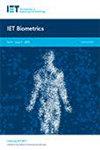Face Morphing Attacks and Face Image Quality: The Effect of Morphing and the Unsupervised Attack Detection by Quality
IF 1.8
4区 计算机科学
Q3 COMPUTER SCIENCE, ARTIFICIAL INTELLIGENCE
引用次数: 2
Abstract
Morphing attacks are a form of presentation attacks that gathered increasing attention in recent years. A morphed image can be successfully verified to multiple identities. This operation, therefore, poses serious security issues related to the ability of a travel or identity document to be verified to belong to multiple persons. Previous works touched on the issue of the quality of morphing attack images, however, with the main goal of quantitatively proofing the realistic appearance of the produced morphing attacks. We theorize that the morphing processes might have an effect on both, the perceptual image quality and the image utility in face recognition (FR) when compared to bona fide samples. Towards investigating this theory, this work provides an extensive analysis of the effect of morphing on face image quality, including both general image quality measures and face image utility measures. This analysis is not limited to a single morphing technique, but rather looks at six different morphing techniques and five different data sources using ten different quality measures. This analysis reveals consistent separability between the quality scores of morphing attack and bona fide samples measured by certain quality measures. Our study goes further to build on this effect and investigate the possibility of performing unsupervised morphing attack detection (MAD) based on quality scores. Our study looks intointra and inter-dataset detectability to evaluate the generalizability of such a detection concept on different morphing techniques and bona fide sources. Our final results point out that a set of quality measures, such as MagFace and CNNNIQA, can be used to perform unsupervised and generalized MAD with a correct classification accuracy of over 70%.人脸变形攻击与人脸图像质量:变形的影响及基于质量的无监督攻击检测
变形攻击是近年来引起越来越多关注的一种表示攻击形式。变形后的图像可以成功地验证多个身份。因此,这一行动造成了严重的安全问题,涉及一份旅行或身份证件能否被核实为多人所有。先前的作品触及了变形攻击图像的质量问题,然而,其主要目标是定量证明所产生的变形攻击的现实外观。我们推测,与真实样本相比,变形过程可能对感知图像质量和人脸识别(FR)中的图像效用都有影响。为了研究这一理论,本研究对变形对人脸图像质量的影响进行了广泛的分析,包括一般图像质量度量和人脸图像效用度量。这个分析并不局限于单一的变形技术,而是着眼于六种不同的变形技术和使用十种不同质量度量的五种不同数据源。这一分析揭示了变形攻击的质量分数与某些质量度量所测量的真实样本之间具有一致的可分性。我们的研究进一步建立在这种影响的基础上,并研究基于质量分数执行无监督变形攻击检测(MAD)的可能性。我们的研究着眼于数据集内部和数据集间的可检测性,以评估这种检测概念在不同变形技术和真实来源上的泛化性。我们的最终结果指出,一组质量度量,如MagFace和CNNNIQA,可以用来执行无监督和广义的MAD,正确的分类准确率超过70%。
本文章由计算机程序翻译,如有差异,请以英文原文为准。
求助全文
约1分钟内获得全文
求助全文
来源期刊

IET Biometrics
COMPUTER SCIENCE, ARTIFICIAL INTELLIGENCE-
CiteScore
5.90
自引率
0.00%
发文量
46
审稿时长
33 weeks
期刊介绍:
The field of biometric recognition - automated recognition of individuals based on their behavioural and biological characteristics - has now reached a level of maturity where viable practical applications are both possible and increasingly available. The biometrics field is characterised especially by its interdisciplinarity since, while focused primarily around a strong technological base, effective system design and implementation often requires a broad range of skills encompassing, for example, human factors, data security and database technologies, psychological and physiological awareness, and so on. Also, the technology focus itself embraces diversity, since the engineering of effective biometric systems requires integration of image analysis, pattern recognition, sensor technology, database engineering, security design and many other strands of understanding.
The scope of the journal is intentionally relatively wide. While focusing on core technological issues, it is recognised that these may be inherently diverse and in many cases may cross traditional disciplinary boundaries. The scope of the journal will therefore include any topics where it can be shown that a paper can increase our understanding of biometric systems, signal future developments and applications for biometrics, or promote greater practical uptake for relevant technologies:
Development and enhancement of individual biometric modalities including the established and traditional modalities (e.g. face, fingerprint, iris, signature and handwriting recognition) and also newer or emerging modalities (gait, ear-shape, neurological patterns, etc.)
Multibiometrics, theoretical and practical issues, implementation of practical systems, multiclassifier and multimodal approaches
Soft biometrics and information fusion for identification, verification and trait prediction
Human factors and the human-computer interface issues for biometric systems, exception handling strategies
Template construction and template management, ageing factors and their impact on biometric systems
Usability and user-oriented design, psychological and physiological principles and system integration
Sensors and sensor technologies for biometric processing
Database technologies to support biometric systems
Implementation of biometric systems, security engineering implications, smartcard and associated technologies in implementation, implementation platforms, system design and performance evaluation
Trust and privacy issues, security of biometric systems and supporting technological solutions, biometric template protection
Biometric cryptosystems, security and biometrics-linked encryption
Links with forensic processing and cross-disciplinary commonalities
Core underpinning technologies (e.g. image analysis, pattern recognition, computer vision, signal processing, etc.), where the specific relevance to biometric processing can be demonstrated
Applications and application-led considerations
Position papers on technology or on the industrial context of biometric system development
Adoption and promotion of standards in biometrics, improving technology acceptance, deployment and interoperability, avoiding cross-cultural and cross-sector restrictions
Relevant ethical and social issues
 求助内容:
求助内容: 应助结果提醒方式:
应助结果提醒方式:


